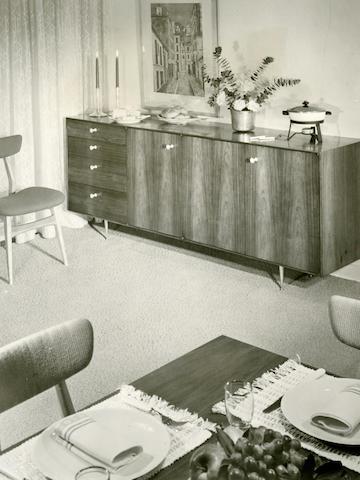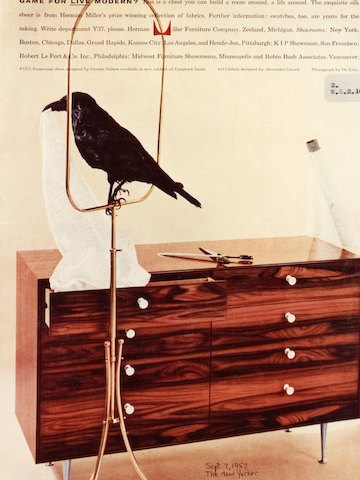
The piece caught the eye of Herman Miller founder D.J. De Pree, who was searching for a design director after the sudden death of Gilbert Rohde, and Nelson soon had the job. He went on to work as Design Director at Herman Miller for over 25 years. During this time he examined the problems people faced in their homes and offices and designed new types of furniture to address those needs.
From storage wall to cabinet series
The Storage Wall concept was the forerunner to a series of cabinets that Nelson designed over the years. The Rosewood Cabinet Series of 1952 represents a synthesis of Nelson’s approach to modular storage furniture with a heightened attention to quality and craftsmanship. As the range of veneers expanded and design details were standardised, they were renamed in 1958 after the feature that gives them their unique aesthetic quality: the thin edge that frames the doors and drawers. Today, we have updated these classic pieces with environmentally supportable veneers and finishing processes while maintaining the original design.

